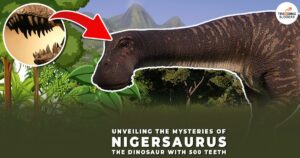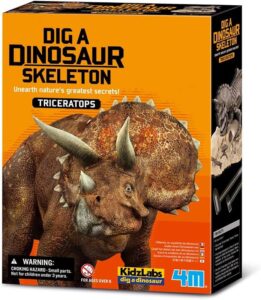Which Dinosaurs Lived in the Triassic Period
As dawn breaks over the ancient landscapes of the Triassic Period, a world teeming with life begins to stir. Among the lush ferns and towering cycads, the earliest dinosaurs carve out their existence.
They're pioneers in a world that's rapidly changing, from the small but fierce Eoraptor to the long-necked Riojasaurus.
However, this era also hosts creatures like the formidable Postosuchus, hinting at a complex ecosystem where dinosaurs are just one part of a larger story. Uncovering which dinosaurs thrived during this period offers a glimpse into the dawn of these magnificent creatures, laying the groundwork for a deeper exploration into their evolutionary journey.
Key Takeaways
- The Triassic period saw the emergence of dinosaurs, including Eoraptor, one of the earliest known species.
- Herbivorous dinosaurs like Plateosaurus and Riojasaurus began to thrive, suggesting diverse diets and ecological roles.
- Carnivorous dinosaurs such as Herrerasaurus and Staurikosaurus indicated the presence of predator-prey dynamics early in dinosaur evolution.
- Though not a dinosaur, Postosuchus played a significant role in Triassic ecosystems, highlighting the diversity of archosaurs during this period.
The Dawn of Dinosaurs
The dawn of dinosaurs, marking a pivotal era in Earth's history, began approximately 230 million years ago during the late Triassic period, introducing a lineage that would eventually dominate terrestrial ecosystems for over 160 million years.
This period witnessed the gradual emergence of dinosaurs from archosaur ancestors, amidst a world recovering from the Permian-Triassic extinction event. The Triassic environment, characterized by its varied but predominantly arid climate, posed challenges that spurred evolutionary innovations among early dinosaurs.
Their adaptability is underscored by diverse morphologies suited for different ecological niches, ranging from bipedal carnivores to quadrupedal herbivores. This era set the stage for the Mesozoic, often termed the 'Age of Dinosaurs,' where they diversified into the dominant land animals of their time, showcasing the evolutionary resilience and versatility that defined their reign.
Eoraptor: The Earliest Dinosaur
Eoraptor, a pivotal genus in understanding dinosaur evolution, emerged during the Triassic Period, shedding light on the initial stages of dinosaur development.
Its discovery provides critical insights into the physical characteristics, diet, and the broader ecological context of early dinosaurs.
Analyzing Eoraptor's habitat and lifestyle offers a window into the environmental conditions and ecological dynamics that shaped the early Mesozoic era.
Eoraptor's Discovery History
Discovered in Argentina in 1991 by paleontologist Ricardo Martínez, Eoraptor stands as one of the earliest known dinosaurs, marking a significant moment in paleontological history. Its unearthing in the Valle de la Luna of the Ischigualasto Formation, a site renowned for its Triassic fossils, underscored the region's global significance in the study of prehistoric life. The discovery of Eoraptor, a genus that roamed the Earth approximately 231 million years ago, provided invaluable insights into the evolutionary lineage of dinosaurs, establishing a foundation for further research into their origins and diversification.
The revelation of Eoraptor's age challenges preconceived notions about the timeline of dinosaur evolution.
Its discovery in Argentina underscores the country's pivotal role in unearthing Earth's ancient history.
Eoraptor illuminates the dawn of the Age of Dinosaurs, evoking a sense of wonder at life's enduring legacy.
Physical Traits & Diet
Possessing a lithe frame that suggests agility, Eoraptor's physical characteristics and inferred diet offer a glimpse into the life of one of the earliest dinosaurs. Its relatively small body, estimated to be around 1 meter in length, combined with heterodont dentition, indicates a versatile feeding strategy.
The presence of both sharp, curved carnivorous teeth and flatter, herbivore-like teeth suggests a potential omnivorous diet, allowing it to exploit a wide range of food sources. This adaptability in feeding habits might've been a crucial factor in its survival during the Triassic period.
Eoraptor's forelimbs, adorned with five-fingered hands and recurved claws, further imply an ability to grasp and manipulate objects, possibly aiding in food acquisition. This combination of physical traits underscores Eoraptor's significance in understanding early dinosaur evolution and ecological niches.
Habitat and Lifestyle Insights
Understanding the physical traits and diet of Eoraptor not only unveils its adaptability but also sets the stage for exploring the environments it inhabited and how its lifestyle was shaped by the Triassic landscapes. This dinosaur's existence during the Late Triassic period, approximately 231.4 million years ago, provides critical insights into early dinosaur evolution and their ecological niches.
- Eoraptor's habitat, characterized by varied, yet harsh environments, underscores its remarkable adaptability and survival skills.
- Its omnivorous diet suggests a flexible lifestyle, thriving amidst the diverse flora and fauna of the Triassic period.
- The social behavior of Eoraptor, though speculative, hints at a complex interaction with its environment and possibly other species, showcasing the evolutionary prowess of early dinosaurs.
This analysis not only enriches our understanding of Eoraptor but also the intricate ecosystem dynamics of the Triassic period.
Herrerasaurus: The Predator
Among the formidable predators of the Triassic Period, Herrerasaurus stands out for its early appearance in the dinosaur lineage and its sophisticated hunting capabilities. Herrerasaurus, existing approximately 230 million years ago, is recognized for its bipedal locomotion, which suggests a high degree of agility and speed, advantageous for both pursuing prey and evasive maneuvers.
Its skeletal structure, particularly the robust jaw with sharp, serrated teeth, indicates a diet primarily consisting of meat. This dinosaur's relatively large size, compared to other contemporaneous fauna, provided a competitive edge in the predatory hierarchy of its ecosystem.
Herrerasaurus's discovery in South America contributes significantly to our understanding of early dinosaur evolution, illustrating a crucial phase in the diversification of these reptiles.
Plateosaurus: The Gentle Giant
While Herrerasaurus epitomized the predatory might of the Triassic Period, Plateosaurus presents a starkly different aspect of dinosaur life, embodying the era's herbivorous giants with its massive frame and gentle feeding habits.
Plateosaurus thrived in a world of lush vegetation, primarily feeding on the abundant flora of the Late Triassic landscape, revealing a peaceful coexistence with its environment.
Its size, estimated to reach up to 10 meters in length, underscores a formidable presence, yet it sustained itself through grazing, not predation.
The discovery of Plateosaurus fossils in large groups suggests they may have lived in herds, offering a glimpse into social behaviors that evoke a sense of community among these ancient giants.
This analysis underscores the diversity of dinosaur life in the Triassic, highlighting the gentle giants that roamed the earth long before the dominance of carnivorous predators.
Coelophysis: The Swift Hunter
Coelophysis, a lithe predator of the Late Triassic, exemplified the era's evolutionary leap towards efficient carnivory. This dinosaur, measuring up to 3 meters in length, possessed a slender body and long legs, indicative of its ability to chase down prey with remarkable speed.
Its jaw, filled with sharp teeth, was perfectly adapted for slicing through the flesh of its victims. The fossil record suggests Coelophysis hunted in packs, a strategy that likely increased its success rate in capturing more agile or larger prey. This behavior not only highlights its intelligence but also its social structure, rare traits among Triassic dinosaurs.
Coelophysis's fossils, particularly abundant in what's now the southwestern United States, provide invaluable insights into predator-prey dynamics and ecosystem structures of the time, marking it as a pivotal species in dinosaur evolution.
Staurikosaurus: South America's Fossil
Turning our attention to South America, Staurikosaurus emerges as a pivotal figure in the narrative of Triassic dinosaurs. Its discovery history opens a window into the paleontological richness of the region, offering insights into the methodologies that underpin our understanding of ancient life.
Analyzing its physical characteristics, habitat, and diet provides a comprehensive view of its ecological role, underscoring the complexity of prehistoric ecosystems.
Staurikosaurus Discovery History
In the early 1970s, Brazilian paleontologist Llewellyn Ivor Price unearthed the first known remains of Staurikosaurus, marking a pivotal discovery in South American paleontology. This find was significant for several reasons. Firstly, it shed light on the diversity of dinosaur species in the Triassic period, particularly in regions that are now part of modern-day Brazil. Secondly, the discovery of Staurikosaurus provided invaluable insights into the evolutionary lineage of theropods, a group that includes some of the most well-known dinosaurs, including Tyrannosaurus Rex.
The discovery inspired a new generation of paleontologists in South America.
It contributed to a deeper understanding of the prehistoric ecosystem in this part of the world.
The finding underscored the importance of South America as a key site for dinosaur evolution.
Physical Characteristics
Having explored the historical significance of Staurikosaurus's discovery, we now focus on its physical characteristics, which reveal much about its survival strategies during the Triassic period.
The Staurikosaurus, a bipedal carnivore, exhibited a slender, agile body structure conducive to hunting and evasion. Its estimated length of around 2.25 meters and a weight of approximately 30 kilograms suggest a relatively small but efficient predator. The presence of sharp, serrated teeth indicates a diet that primarily consisted of meat.
Furthermore, its long, powerful hind limbs, coupled with proportionally shorter forelimbs, imply a capability for swift movements and possibly sustained running or ambush predation. These physical attributes underscore the Staurikosaurus's adaptation to a predatory lifestyle within the diverse ecosystems of the Triassic period.
Habitat and Diet
Delving into the Staurikosaurus's ecology, its habitat within the lush, prehistoric landscapes of South America significantly influenced its dietary preferences and hunting behaviors. This carnivorous dinosaur thrived in a world where the interplay between its physical adaptations and the environment was critical for survival. Its diet primarily consisted of smaller vertebrates, which it adeptly hunted amid the dense vegetation that characterized its habitat. The analysis of fossil evidence suggests an agile predator, capable of navigating through both open spaces and dense underbrush in pursuit of prey.
The vast, uncharted forests of Triassic South America evoke a sense of mystery and wonder.
Imagining the Staurikosaurus in pursuit of its next meal highlights the brutal, yet fascinating circle of life in prehistoric times.
The delicate balance between predator and prey underscores the interconnectedness of ancient ecosystems.
Liliensternus: The Carnivorous Dinosaur
Liliensternus, a notable carnivorous dinosaur of the Triassic period, showcased a remarkable adaptation for hunting, embodying the era's predatory prowess. This theropod, measuring up to 5.2 meters in length, possessed distinctive physical features tailored for predation. Its elongated limbs suggest a capacity for swift movement, enabling it to ambush prey with efficiency.
The anatomy of Liliensternus, particularly its sharp, serrated teeth and powerful hind legs, indicates a highly specialized diet consisting primarily of smaller dinosaurs and possibly large insects. Scientific analysis of its fossilized remains, discovered in Germany, provides insight into its hunting techniques, suggesting a reliance on both speed and stealth.
This predator's existence offers valuable evidence of early carnivorous dinosaur evolution, illustrating the complex ecosystem dynamics of the Triassic period.
Lesothosaurus: The Small Herbivore
While Liliensternus epitomizes the predatory dominance of the Triassic period, Lesothosaurus offers a contrasting glimpse into the era's herbivorous inhabitants, underscoring the diverse dietary strategies that shaped this ancient ecosystem. Lesothosaurus, a small, agile dinosaur, navigated its landscape with a keen sense of survival, primarily feeding on the flora of its time. Its compact body and swift legs suggest a life spent darting through vegetation, evading predators, and contributing to the ecological balance.
- Survival Amidst Giants: Lesothosaurus's existence amidst colossal predators evokes admiration for its resilience.
- Harmony in Diversity: This dinosaur exemplifies the intricate web of life, where every creature plays a role.
- A Glimpse into Evolution: Studying Lesothosaurus helps us understand evolutionary adaptations in herbivorous dinosaurs, stirring curiosity and wonder about life's complexity.
Riojasaurus: The Long-Necked Dinosaur
Among the notable inhabitants of the Triassic period, Riojasaurus stands out for its distinctive long neck, an adaptation that likely played a crucial role in its feeding strategy and survival. This herbivorous dinosaur, which resided in what's now modern-day Argentina, exhibits characteristics that have intrigued paleontologists for decades.
Its elongated neck, comprising several vertebrae, allowed it to access a diverse array of foliage, including leaves from high trees that other contemporaneous species couldn't reach. This anatomical feature suggests a specialized ecological niche, highlighting the evolutionary innovation during the Triassic period.
Furthermore, Riojasaurus's robust body structure, with four sturdy legs positioned directly under its body, indicates a relatively slow but stable locomotion, supporting its grazing lifestyle amidst the lush Triassic vegetation.
Postosuchus: The Predecessor
Postosuchus, a formidable predator of the Triassic period, exhibited predatory behaviors that underscore its apex status in prehistoric ecosystems.
Its habitat and environment, characterized by arid conditions and sparse vegetation, played a crucial role in shaping its physiological adaptations and survival strategies.
The evolutionary significance of Postosuchus lies in its representation of archosaur dominance and diversification during the Triassic, offering insights into the predatory lineage leading to dinosaurs and crocodilians.
Predatory Behaviors
The predatory behaviors of Postosuchus, a formidable predecessor in the Triassic period, reveal a sophisticated and aggressive hunting strategy that significantly influenced the evolution of carnivorous dinosaurs. This archosaur, not a true dinosaur but closely related, showcased adaptations that made it a top predator of its time. Its approach to hunting and feeding demonstrates the complex interplay between anatomy, behavior, and the environment in early predatory dinosaurs.
- Stealth and Surprise: Postosuchus likely utilized ambush tactics, leveraging its powerful limbs and body structure for sudden bursts of speed to surprise its prey.
- Powerful Bite: Equipped with strong jaws and sharp teeth, it could deliver fatal bites to incapacitate or kill.
- Social Hunting?: While evidence is speculative, some theorize that Postosuchus might've hunted in packs, a strategy that would predate later carnivorous dinosaurs.
Habitat and Environment
Thriving in the lush, diverse ecosystems of the late Triassic period, Postosuchus occupied territories that offered abundant resources and complex environmental challenges. These regions were characterized by a mix of arid deserts and humid, forested areas, reflecting a period of significant climatic fluctuation and environmental diversity.
This variety in habitats necessitated a high degree of adaptability from Postosuchus, enabling it to become a dominant predator in its ecosystem. The presence of vast river systems and lakes within these territories provided not only a source of hydration but also a rich array of prey species, contributing to the ecological complexity of the habitat.
Such dynamic environments fostered the evolutionary adaptations that allowed Postosuchus to thrive, underscoring the intricate interplay between organisms and their surroundings during the Triassic period.
Evolutionary Significance
Often overlooked in the vast narrative of prehistoric life, Postosuchus's role as a precursor to later dominant terrestrial predators highlights its significant evolutionary impact during the Triassic period. This formidable archosaur, not a true dinosaur but closely related, exhibited characteristics that would set the stage for the rise of dinosaurs. Its existence underscores the intricate processes of natural selection and adaptation that shaped the prehistoric world.
The emergence of Postosuchus represented a pivotal moment in the evolutionary arms race, foreshadowing the dominance of future predators.
Its anatomical features suggest a sophisticated level of predation and competition, driving the evolutionary trajectory of terrestrial ecosystems.
The legacy of Postosuchus illustrates the unpredictable nature of evolution, where each species plays a critical role in shaping the future of life on Earth.
Conclusion
In conclusion, the Triassic period marked the dawn of dinosaurs, a pivotal chapter in Earth's prehistoric narrative. From the diminutive Eoraptor, often considered the genesis of dinosaur evolution, to the formidable Herrerasaurus, these creatures set the stage for the Mesozoic era's diverse dinosaur cast. Among them, Plateosaurus and Riojasaurus introduced the era of giants, while Coelophysis epitomized predatory efficiency.
Intriguingly, the presence of Postosuchus, a non-dinosaurian archosaur, illustrates nature's experimental phase, akin to a prehistoric Silicon Valley, teeming with evolutionary start-ups that shaped the Jurassic world.



